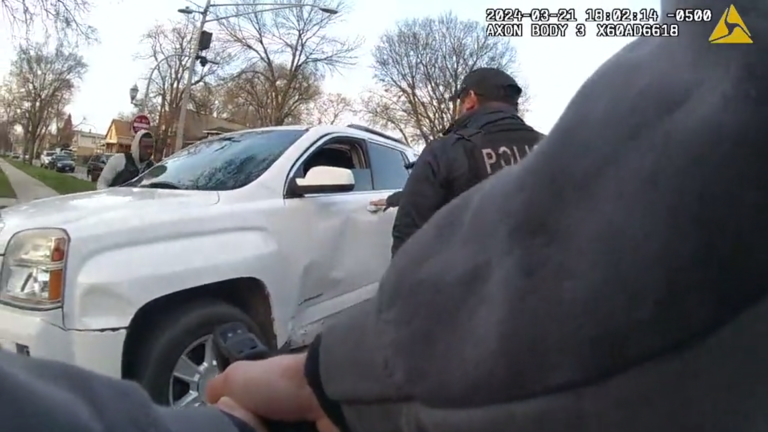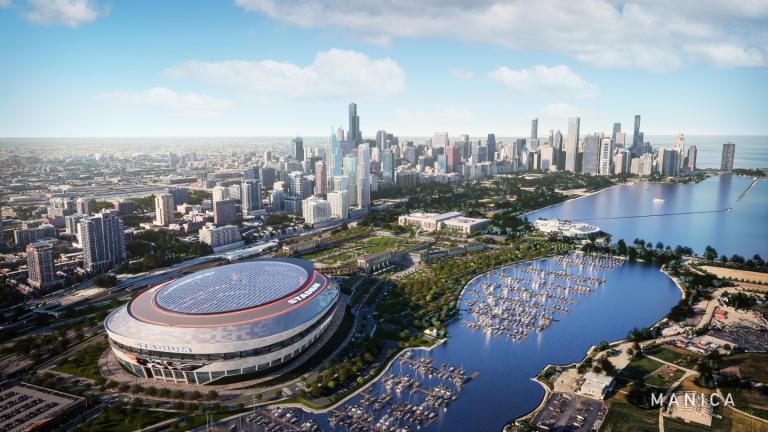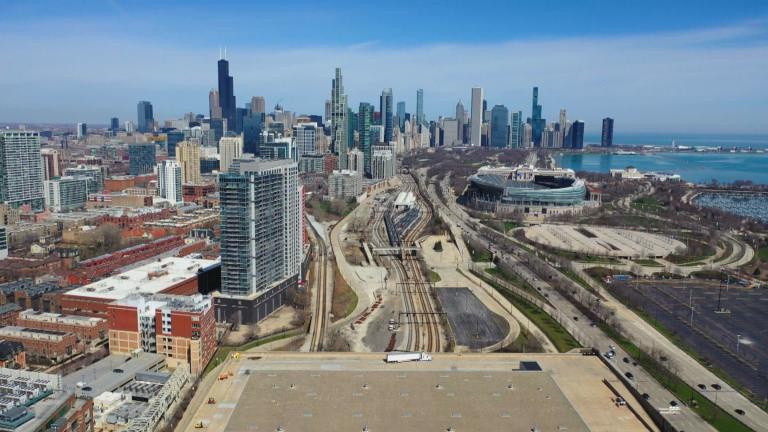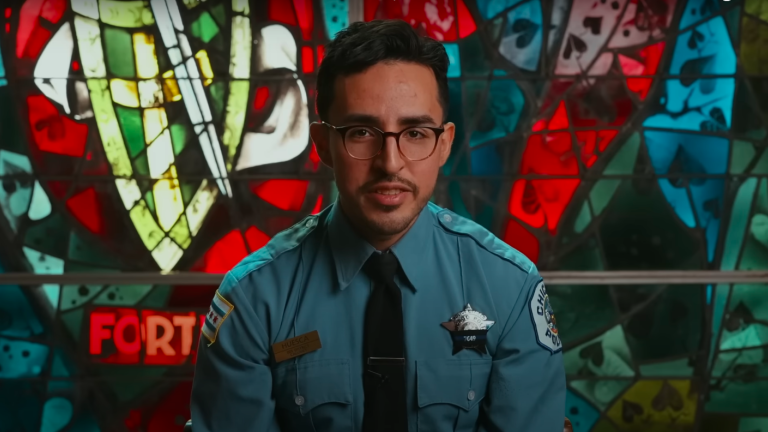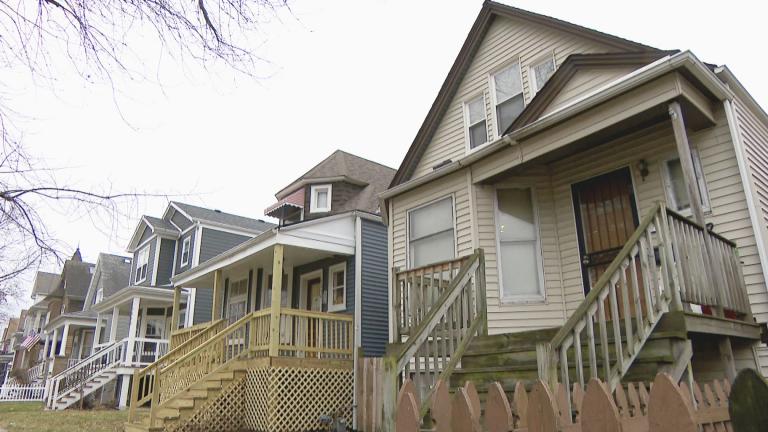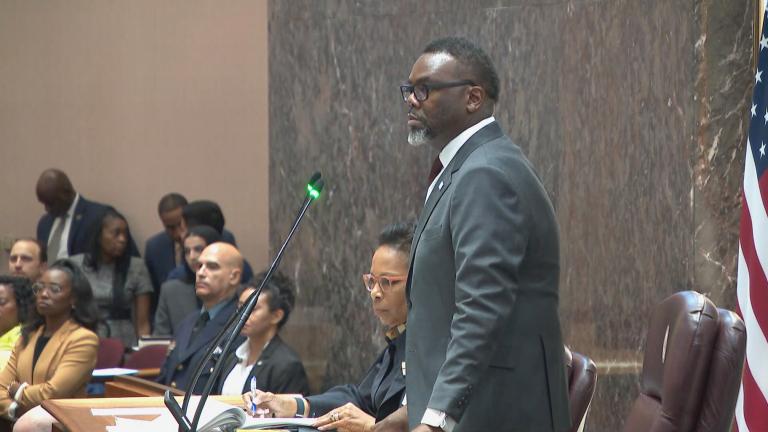Mayor Brandon Johnson announced Wednesday he will focus his administration’s anti-violence efforts on 10 of Chicago’s “most vulnerable” areas on the city’s West and South sides as part of the next phase of his plan designed to address the root causes of crime.
“We know what creates violence in a neighborhood,” Johnson said. “It is the lack of job opportunities. It’s disengagement. Disengagement from school, or access to alternate pathways to careers. It’s disengagement from housing, and you have housing instability, and of course, storefront vacancies and other disparities.”
All four of the neighborhoods — Englewood, West Garfield Park, Austin and Little Village — have suffered from decades of disinvestment and neglect, leading to joblessness and despair, fueling a cycle of violence that has made them some of the most violent places in Chicago, Johnson said.
Johnson said it was “high time” for the city to “directly address the racial and social economic disparities that contribute to the violence” on Chicago’s West and South sides.
City officials will work “block by block, door to door” to address these disparities, Johnson said.
“The full force of my administration is coming to your front door,” Johnson told reporters. “That’s what true fifth floor organizing looks like.”
“These communities have historically been ignored, even when in crisis, and that has proven to be unsustainable,” Deputy Mayor of Community Safety Garien Gatewood said in a statement. “By strategically targeting investments and fostering community engagement, we aim to create a lasting change that promotes safety and opportunity for all residents while laying the groundwork for long-term prosperity.”
City officials will ask community groups to submit proposals starting next month to spend $1 million in public funds designed to create safer neighborhoods by making “long-term, layered investments” to improve nearly every aspect of the neighborhoods’ civic life.
The four communities that Chicago officials will focus on are:
- Between 59th and 63rd streets and along Garfield Boulevard in Englewood
- Along Madison, Adams and Jackson streets near the Eisenhower Expressway in West Garfield Park
- Along Madison, Adams and West End streets in Austin
- Along 26th and 27th streets near Pulaski Road in Little Village
By concentrating on just 10 specific block groups, officials believe they can “amplify the impact of our investments directed at eradicating the root causes of violence in historically disinvested communities,” according to a statement from the mayor’s office.
Those four areas of the West and South sides “are the most vulnerable neighborhoods that require immediate support and resources,” officials said.
In each of those areas, shootings are far more likely to occur as compared with the citywide average, Gatewood said.
In Englewood, the number of murders is up 5% since the beginning of the year, Johnson said. By comparison, murders citywide have dropped 12% this year, as compared with 2022.
Youth unemployment is also much higher in the four neighborhoods the city plans to focus on, with rates of educational attainment and annual income much lower than in the rest of the city.
Those neighborhoods are some of the most violent CPD beats with dozens of indicators of historical disinvestment, including school closures as well as many vacant lots, officials said.
Johnson unveiled the next phase of what he dubbed The People’s Plan for Community Safety under the gold dome of the Garfield Park fieldhouse, alongside Ald. Jason Ervin (28th Ward).
“Our communities have been neglected for far too long and we are heartened to have new investment focused on providing more opportunities and making our neighborhoods safer,” Ervin said.
Those plans call for officials to connect people who have been “impacted by the repeated cycle of harm due to purposeful disinvestment,” as well as victims and survivors of violence with meaningful, services.
Johnson’s announcement came nearly two months before the traditional start of summer triggers an increase of crime and violence in what has become an annual ritual for Chicago mayors seeking to convince concerned residents that this coming summer will be different.
But Johnson’s announcement was conspicuously different from those made by his predecessors in the run-up to summer: no mention of additional efforts by the Chicago Police Department to crack down on criminal behavior with additional patrols or enhanced penalties for lawbreakers. Supt. Larry Snelling was not present at Wednesday’s event, nor were any other members of the CPD command staff.
Johnson told WTTW News that city officials have asked police to do too much, placing an “enormous amount of pressure” on the department that has damaged CPD’s relations with Chicagoans.
“It takes all of us,” Johnson said.
Former Mayor Lori Lightfoot’s summer violence strategy focused on the 15 most violent areas of the city — but emphasized the primary role of the Chicago Police Department in stopping crime.
During the 2023 campaign, Johnson said he was determined to unite Chicagoans around a public safety plan that takes a new approach to the surge of crime and violence that began during the peak of the COVID-19 pandemic and has yet to fully recede.
Johnson vowed to address the root causes of crime and violence proactively by increasing funding for youth employment programs and expanding mental health services across the city, while adding 200 detectives to the Chicago Police Department.
Contact Heather Cherone: @HeatherCherone | (773) 569-1863 | [email protected]
A Safer City is supported, in part, by the Sue Ling Gin Foundation Initiative for Reducing Violence in Chicago.

